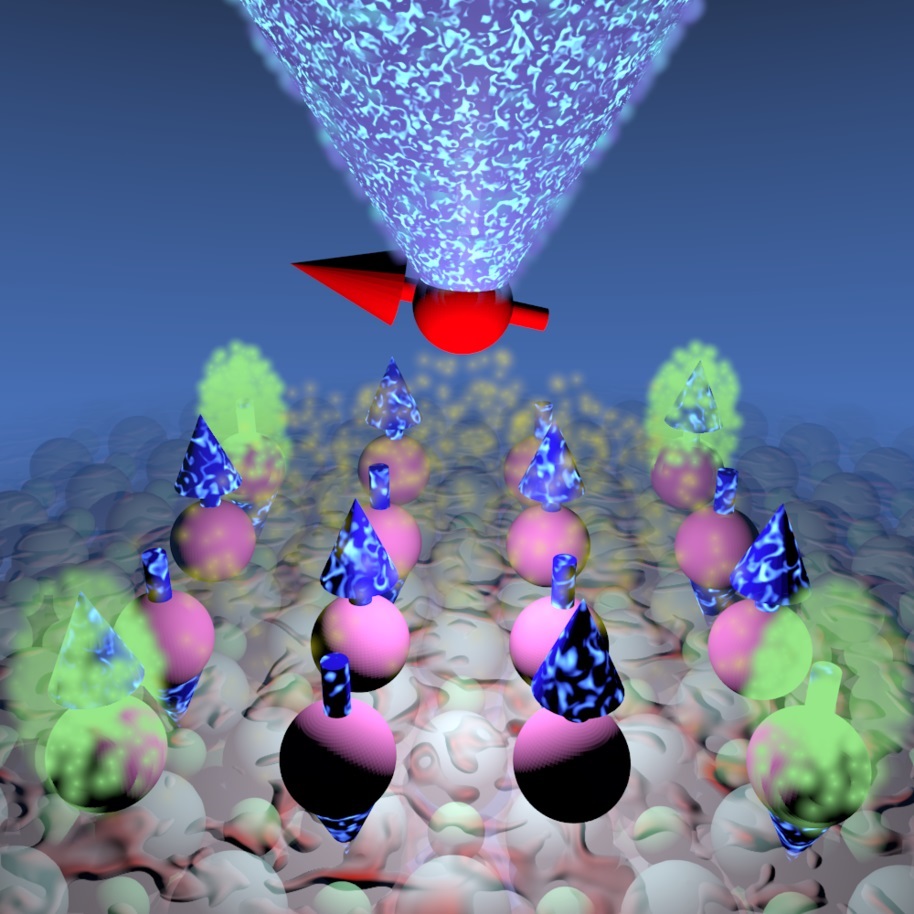29.8.2024
Researchers created a new entangled quantum state of matter by building an artificial quantum material atom-by-atom. The state, dubbed a higher-order topological quantum magnet, may be a way to address key problems in quantum technology, such as decoherence in qubits.
When different quantum states combine, new collective states of matter can emerge. In the quantum realm, combining components such as atoms that possess quantum effects can give rise to macroscopic quantum states of matter, featuring exotic quantum excitations that do not exist anywhere else.
In a collaboration between Aalto University and the Institute of Physics CAS, researchers built an artificial quantum material, atom by atom, from magnetic titanium on top of a magnesium oxide substrate. They then carefully engineered how atoms interacted inside the material with the goal of birthing a new state of quantum matter. Jose Lado, assistant professor at Aalto University, created the theoretical design to engineer the material featuring topological quantum magnetism, and a group led by associate professor Kai Yang at the Institute of Physics CAS built and measured the artificial material using atomic manipulation with scanning tunneling microscopy.
As a result, the researchers demonstrated for the first time a new quantum state of matter known as a higher-order topological quantum magnet. The topological magnet could represent a new way to achieve substantial protection against decoherence in quantum technology.
The research was published today in Nature Nanotechnology: https://www.nature.com/articles/s41565-024-01775-2
Beyond being interesting from the point of view of fundamental science, topological quantum many-body matter such as this new quantum magnet could have a groundbreaking impact on future quantum technologies.
‘Creating a many-body topological quantum magnet makes it possible to explore an exciting new direction in physics. Excitations in topological quantum magnets have wildly different properties than those found in conventional magnets and could allow us to create new physical phenomena that are beyond the capabilities of current quantum materials,’ Lado says.
Quantum magnets are materials that realize a quantum superposition of magnetic states, bringing quantum phenomena from the microscopic to the macroscopic scale. These materials feature exotic quantum excitations–including fractional excitations where electrons behave as if they were split into many parts–that do not exist anywhere outside of this material.
To manipulate how the atoms behaved inside the quantum material the researchers had assembled, they poked each individual atom with a tiny needle. This technique allows for the accurate probing of qubits at the atomic level. The needle, in reality an atomically sharp metal tip, served to excite the atoms’ local magnetic moment, which resulted in topological excitations with enhanced coherence.
‘Topological quantum excitations, such as those realized in the topological quantum magnet we now built, can feature substantial protection against decoherence. Ultimately, the protection offered by these exotic excitations can help us overcome some of the most pressing challenges of currently available qubits,’ Lado says.
In their experiment, the researchers observed that the topological excitations were resistant to perturbations, a feature that was also predicted in Lado’s theoretical design. The results also showed that the quantum coherence of the topological excitations was higher than their original individual components. This finding could point to a way of turning the researchers’ artificial quantum material into a building block for quantum information that is protected from decoherence.





